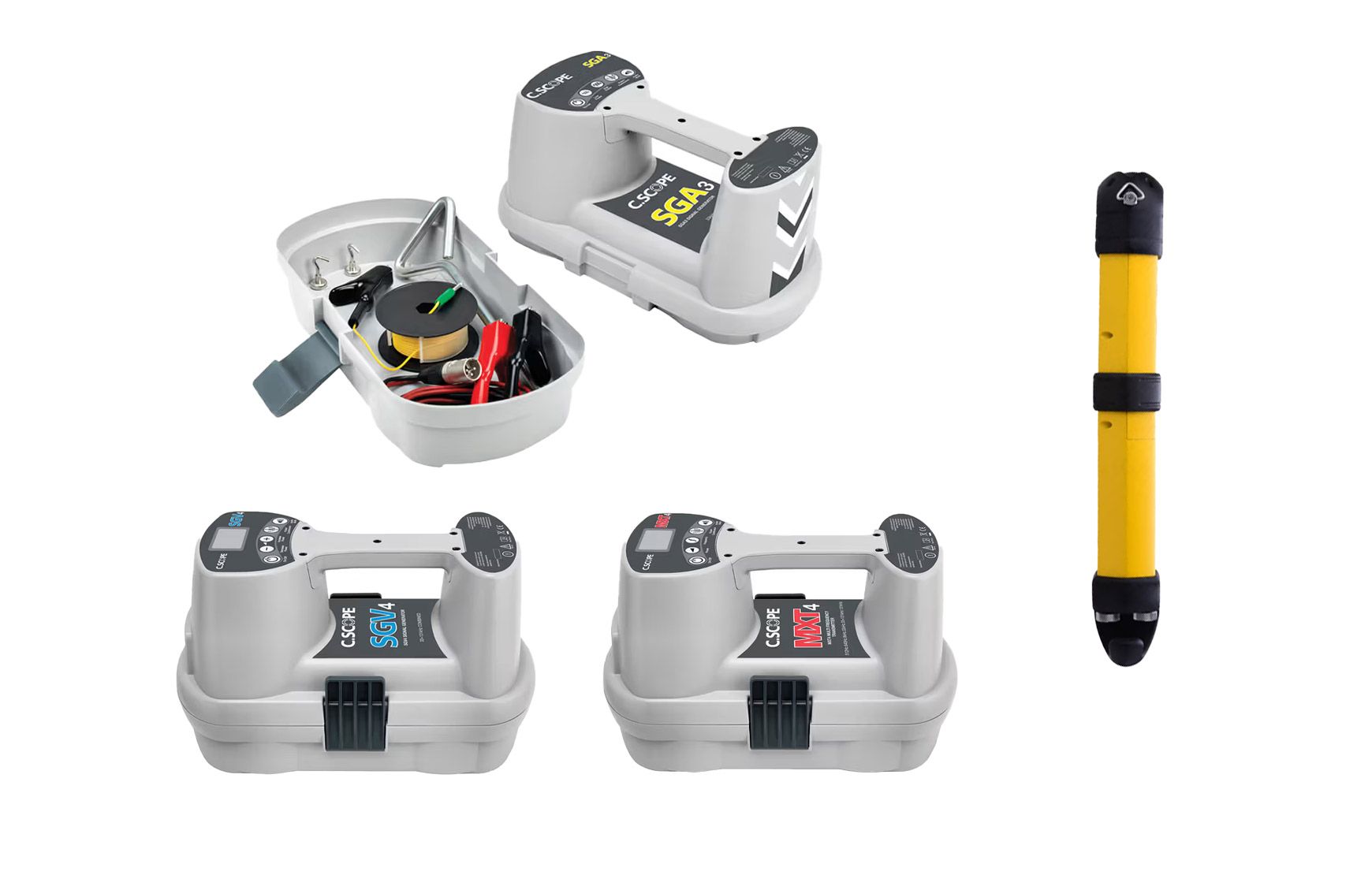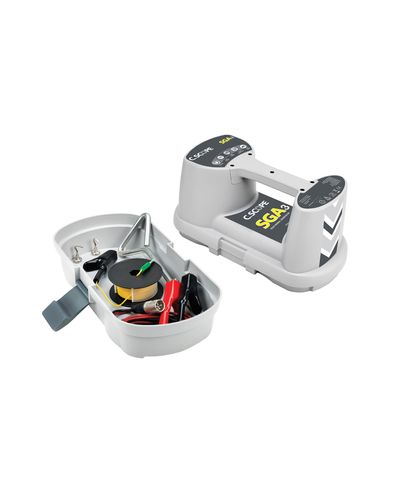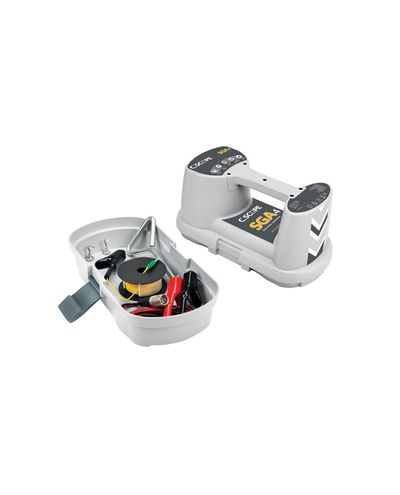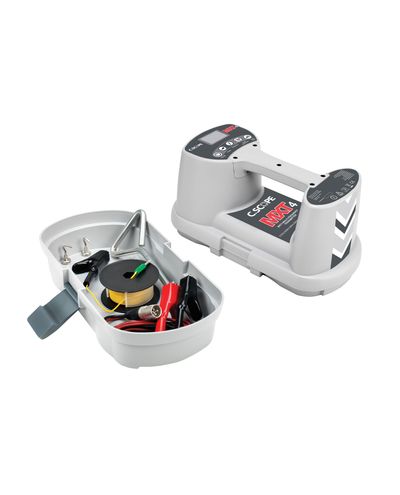Transmitters – precise signal generation for positioning
Transmitters work in conjunction with locators, producing a signal that allows for the precise location of buried cables and pipes. They are particularly useful in situations where passive methods are not sufficient, such as locating non-live cables or non-metallic pipes.
Versatile applications
Construction sites
🏗️ Helps locate underground cables and pipes before excavation, reducing the risk of damage.Maintenance
🔧 Enables the precise location of existing cables and pipes for maintenance and repair work.Infrastructure projects
🛤️ Supports the planning and implementation of road and rail projects by ensuring consideration of underground infrastructure.
Product features
Versatile frequency options
🔄 Offers multiple frequencies that allow for efficient locating of various cables and pipes.Durable construction
🛡️ Designed to withstand demanding jobsite conditions, such as dust and moisture.Long operating time
⏳ Allows for long-term use without the need for constant charging.Ease of use
👌 Clear user interfaces and intuitive operation make the devices user-friendly.
Summary
Transmitters are a key part of cable and pipe locating equipment, enabling accurate and efficient locating of underground infrastructure. They can help prevent damage, save time and costs, and improve the quality of work.
---------
Among the search devices, there are C.Scope search devices for searching for cables and pipes. There are several models. The most affordable basic model is the CXL3, with three search functions. P-electric cable, where a significant current flows. R-radio search, which searches for all long cables and metal pipes. G/T- search function, which searches for the transmitter's artificial signal from the cable or pipe. Usually, transmitters are compatible with different manufacturers, in terms of what frequencies they transmit. The frequency is selected depending on the target, whether it is a plastic or a metal pipe, for example.





